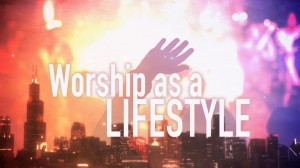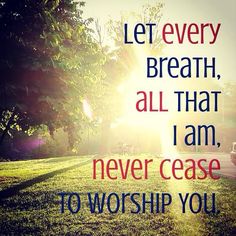[This was first posted in 2014. Sukkot this year 5777/2016 falls on October 17.—Admin1.]
———–
The first time I attended a Sukkot festival was when (then-messianics-now-Sinaites) VAN and BAN invited me to their congregation’s celebration.
If I didn’t know they were into Christ-centered Messianic Judaism (that sounds like a triple oxymoron), I would have thought I was in a Jewish affair except none of the celebrants looked like Jews.
They had a ‘sukkah’ or booth from which were hanging vegetables and fruits. They sang Jewish songs and danced the ‘hora’, the traditional circle dance. Part of their prayers were in Hebrew . . . and the name they invoked most of the time was ‘YHWH-Yeshua’.
At the time I was ignorant and clueless and did not mind Christ-centered believers elevating Jesus to God or on this occasion, ‘Yeshua’ to YHWH. What did I know?
I wondered at myself then why I was not persuaded to ‘convert’ from evangelical Christianity to Messianic Judaism; after all I had studied it on my own almost as much as they did. In fact sharing any discovery with others on any subject, but specially in health or religion, was and continues to be my obsession at the risk of being a turnoff and a ‘bore’.
‘MJ’ introduced me to the Old Testament which, typical of most Christians, I had not bothered to study much; like everyone else, I reasoned ‘why go there, there’s enough to study in the New; after all it’s not applicable to me, I’m under grace and not law’.
In time, after attending a series of Messianic conferences and teaching seminars, I concluded:
- the belief system was the same banana,
- except one was in Christian garb and the other in Jewish dress,
- both believing the Trinitarian God
- and focusing on the Second Person, the Son—
- one calling him Jesus Christ, the other ‘Yeshua HaMaschiach’.
- One focused mostly on the New Testament while the other re-studied the Old but ‘fast-forwarding’ to the New constantly, to prove ‘prophecy’ in one and ‘fulfillment’ in the other.
I like using the zebra as example of this way of ‘seeing’ or ‘reading’ or understanding the Christian/Messianic movement:
- is the zebra black with white stripes or
- white with black stripes?
Whichever way you explain the zebra, the fact is the zebra has black and white stripes and because of those stripes, this creature is still identifiably a zebra.
Messianic Judaism sounds like it’s Jewish because of the word “Judaism” and it probably draws Jewish converts just like the ‘Jews for Jesus’ movement whose mission it is to convince Jews to believe the Jewish Jesus is their long-awaited messiah. Messianics use Jewish symbols and trappings: menorah, mezuzah, tzitzit, shofar, prayer shawls, star of David jewelry with a cross superimposed on it. In fact after meeting a lot of Jews in my city lately, the Messianics appear even more Jewish than true-blue Jews! Sinaites have been wrongly perceived as Jew-wannabes but the real Jew-wannabes are Messianics.
So back to the Sukkot celebration — at the end, except for the name of the God they constantly invoked, I felt like I had attended a Jewish affair.
That was 2007. We are now in 2014. What happened in seven years? Ah seven, a significant number in the Hebrew Scriptures, how providentially coincidental can this be?
As we have many times recounted our transition in personal accounts under JOURNEY, we—VAN and BAN and our core community of 8—are now ‘Sinaites’ and as such, we have weaned ourselves from our Messianic Judaism orientation into arriving at our own conclusions regarding what gentiles like ourselves are required by the Torah Giver.
We keep reminding ourselves we are gentiles, not Jews. Surely, the God of Israel had a plan for all humanity and as we kept studying the Hebrew Scriptures and particularly the Torah, the fog started to lift, hallelu YAH indeed! We can pray like gentiles, celebrate feasts like gentiles, live Torah like gentiles, but if we wish to borrow from the wonderful traditions of the Jews, we could and in fact we do!
With regard the seven feasts commanded in Leviticus 23, we analyzed that while all seven are in the historical and national experience of the chosen people, the nation of Israel then and now, only three out of seven are applicable to a gentile’s experience of the universal God:
- the weekly Sabbath observed by the Creator at the culmination of creation week;
- Shavuot which is the anniversary of the giving of Torah on Sinai; and
- Yom Kippur, since Jew and Gentile commit transgressions against God and fellowman.
Still, we are free to celebrate all seven if we so wish, to join Israel in commemorating their forbears’ liberation from Egypt (Pesach) and Feast of Unleavened Bread, and their living in tents during their wilderness wandering.
It is not an ‘obligation’ but a heartfelt desire to honor and obey the commandments of YHWH that apply to us and are relevant to our gentile experience; we obey as many as we can manage to obey in the context of our culture and our times. It is a lifestyle, not a religion.
That cathedral in the heart (worship) and that cathedral in time (Sabbath)—both are built into our system and become ingrained in our essence if we so choose. It’s all about personal choice, not attending ‘church’ or religious affiliation.
As we have written in one post:
Deuteronomy/Davarim 27: First duty in the Land: build an altar to YHWH
“The ‘altar’ in these instructions should be built in the one and only earthly place where it belongs: in the heart of man from whence the love of YHWH is birthed once the mind recognizes, learns and understands the importance of the knowledge of the One True God. One cannot truly love what one does not know . . . but once introduced to the Creator and Master of the universe through His revelation on Sinai, that altar in the heart is automatically built. . . and then true worship begins, not at church, not in front of an altar, but in outward expressions of what is in the heart, simply living the Torah with an ever-conscious appreciation of this benevolent and gracious God!”
The feasts of Leviticus 23, “MY feasts” — serve as reminders to Israel of the goodness of the God of Israel. . . . but since YHWH is the universal God, these remind us, gentiles of the Nations, to look to Israel as proof there is a God Who manifested Himself and revealed His Will and Way of life to Israel so that all humanity might learn about Him and know Him.
The prophesied end:
And YHWH shall be King over all the earth;
in that day there shall be one LORD with one name.
—Zechariah 14:9.
As our soul/spirit/essence lives in our temporary ‘home’ — our earthly body — our ‘tent’, may we never cease to acknowledge the Source of our breath and bread of life. His Name is YHWH, the cause for our season of joy, Jew and Gentile.
“Instill your awe upon all Your works,
and fear of You on all that You have created.”
— a Jewish Prayer during the ‘Days of Awe’ acknowledging the sovereignty of God on all humankind.
From: Sukkot: The Dual Festival & ‘Covenant & Conversati
http://us7.campaign-archive2.com/?u=2a91b54e856e0e4ee78b585d2&id=8b9eb91097&e=891e5d661b
Amen!
NSB@S6K






Reader Comments